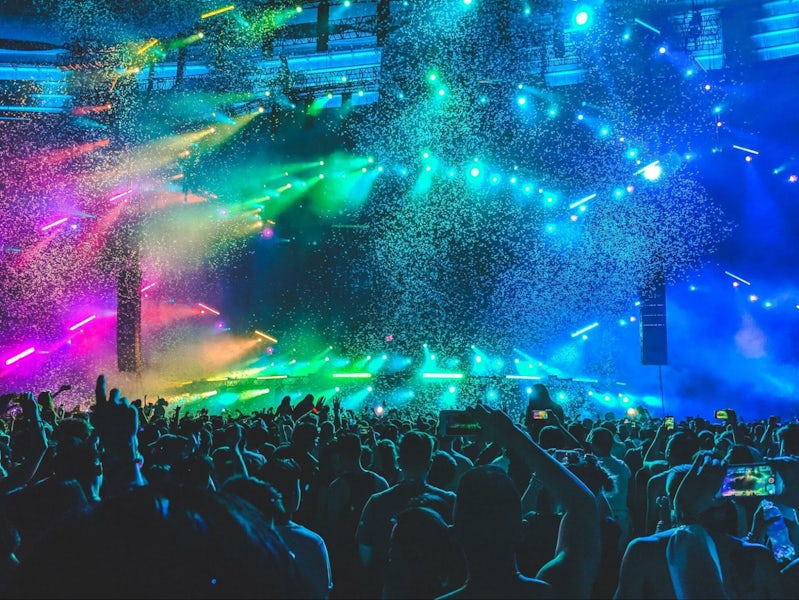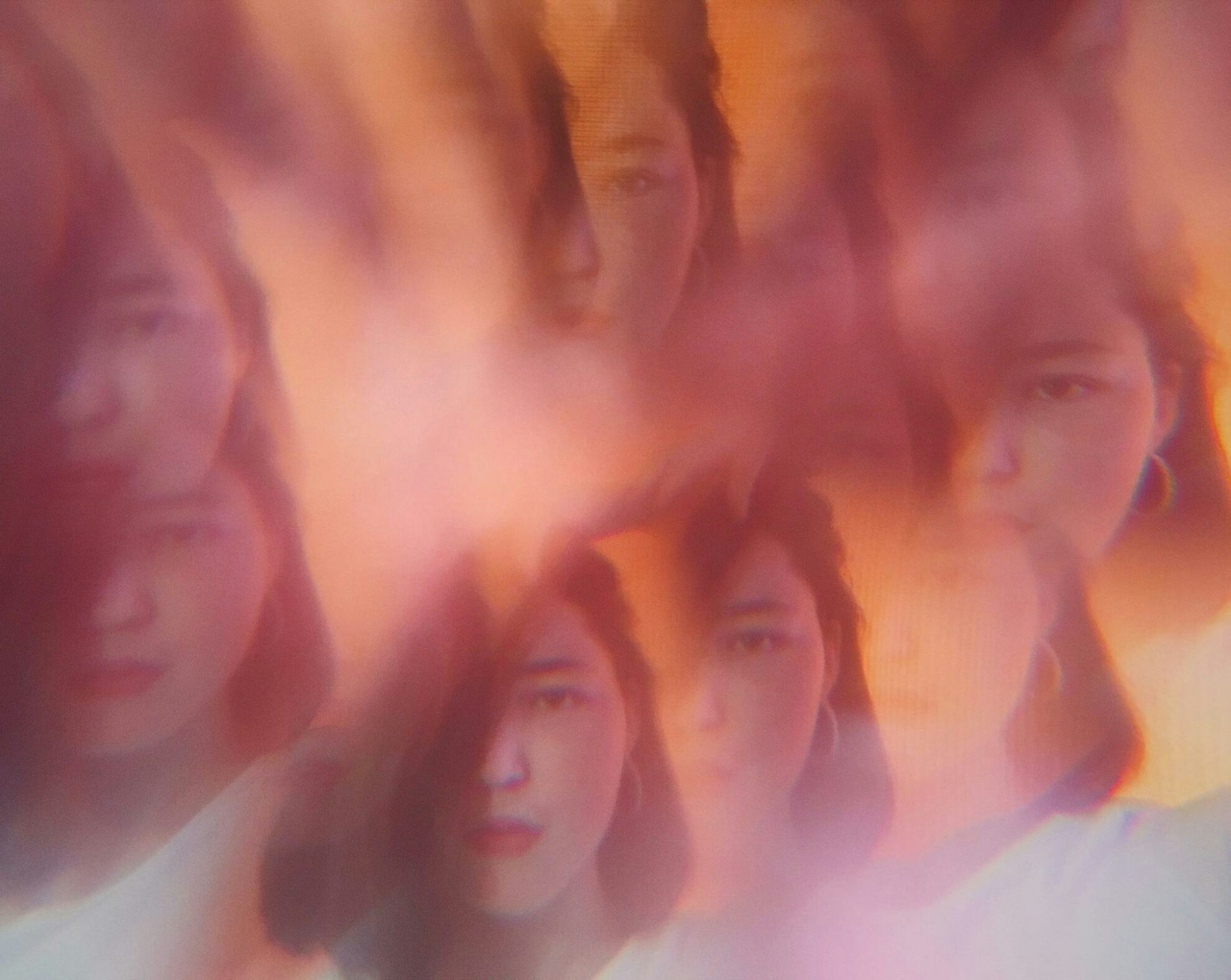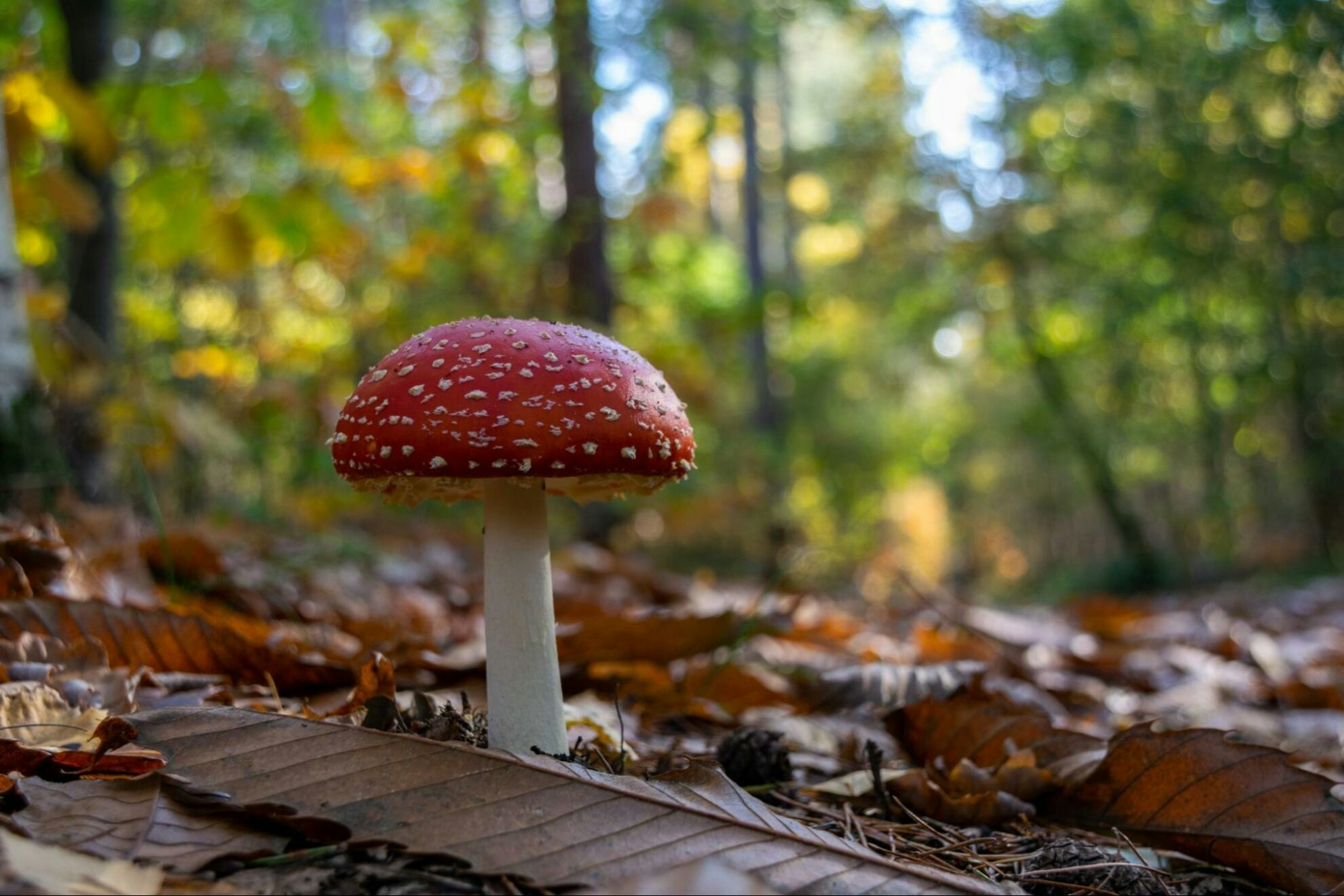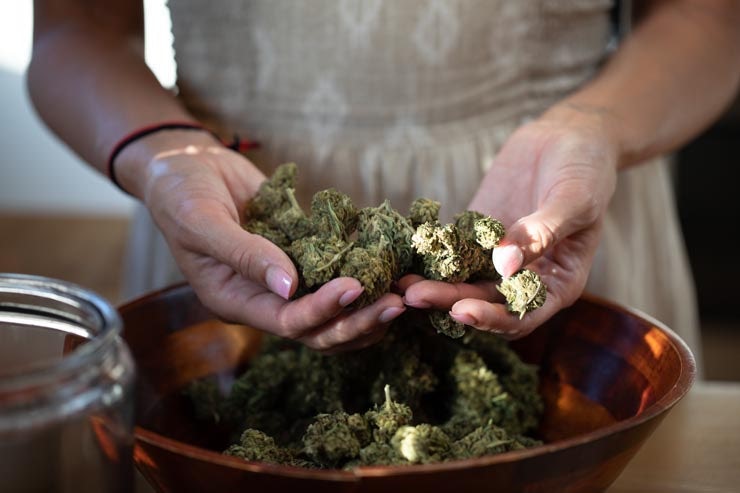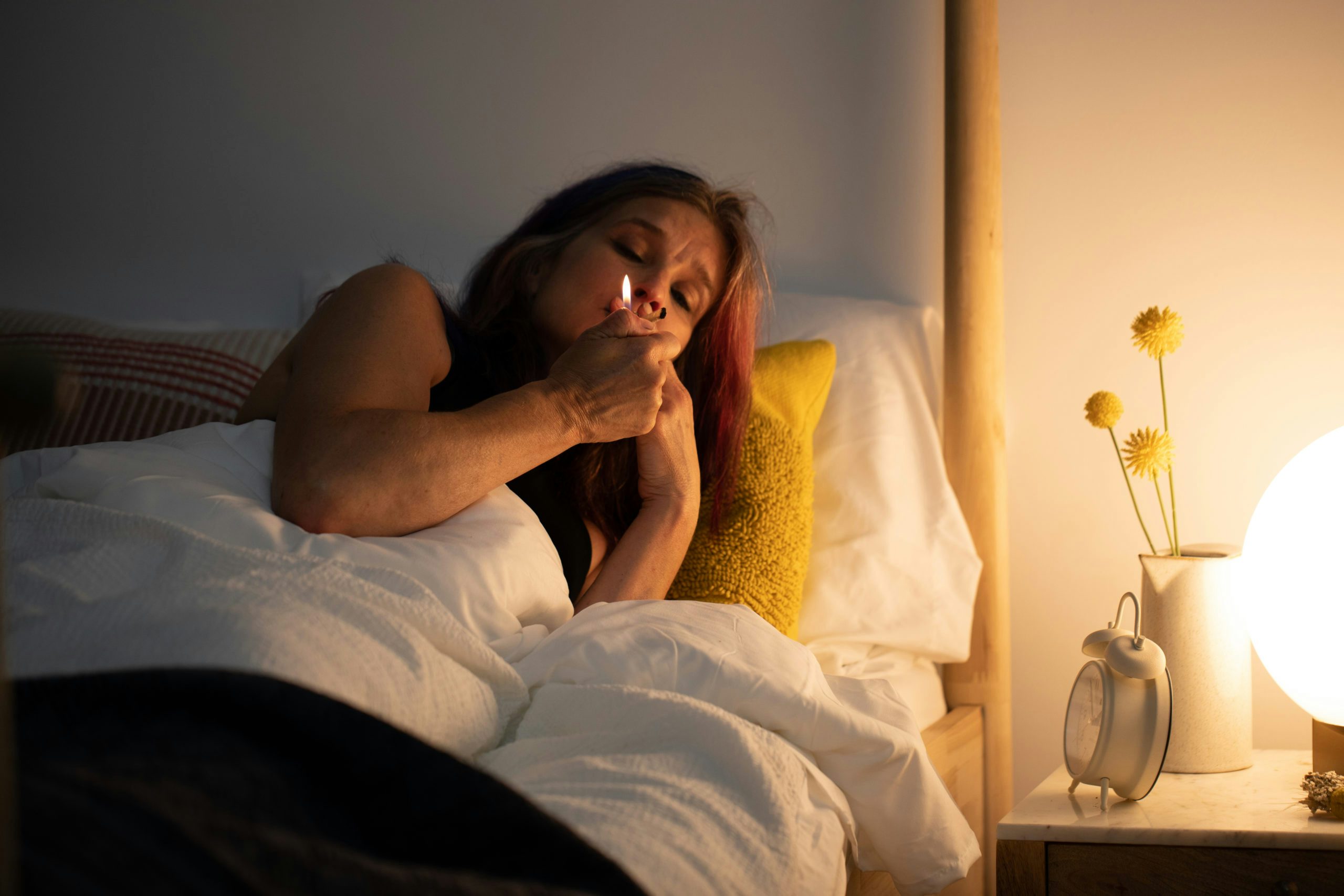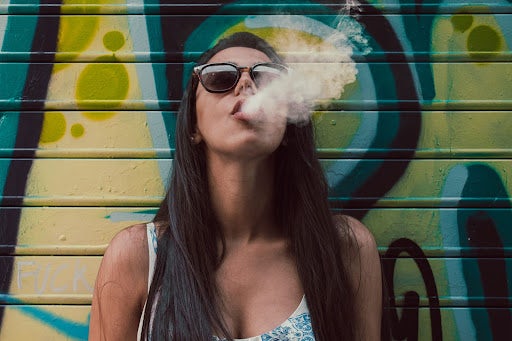Nearly 1% of Americans over the age of 12 have used MDMA in the past 12 months. That’s around 2.5 million people. Moreover, since both cannabis and MDMA are on their way to either descheduling, decriminalization or legalization around the world, this number is likely to grow. A whopping 95% of people who use MDMA/ecstasy also consume cannabis. Which is why we are here. It’s safe to say that weed and MDMA go together – the question is, are they safe to combine?
The answer is unfortunately far from clear cut. The clues we have from existing literature indicate that while it’s probably safe, there’s insufficient clinical research to confirm or dispel it. Happily, the body of research into cannabis and psychedelics (including MDMA) is expanding fast, and it’s likely that better data on their interactions will become available in the near future.
What is MDMA?
OK…brace yourself. Roughly speaking, MDMA (3,4-methylenedioxymethamphetamine) is a psychedelic and a stimulant (an amphetamine derivative). MDMA is a powerful empathogen–entactogen, known for producing feelings of empathy, love and connection, especially in spiritual contexts. 1
MDMA was first synthesized in 1912. However, it only started to get attention in the 1970s, when therapists began using it to treat PTSD, anxiety and addiction. They found that it could be used in sessions to promote trust and safety, helping patients to open up and process traumatic experiences. It was dubbed “molly” because the acronym MDMA can be challenging to say, and “ecstasy” for its intense euphoric effects. Its popularity surged as it made its way deep into the party and rave scenes, prompting the US government to make it illegal in 1985.
Today, as mentioned above, recreational use rates are sitting at around 1% of American teens and adults. And simultaneously, legislators around the world are considering legalizing MDMA for medicinal use, including the FDA. Canada and Australia have already passed legislation allowing for MDMA use for mental health treatment.
| MDMA | THC | |
|---|---|---|
| Primary source | Synthetic (man-made) | Cannabis plant |
| Primary active ingredient/s | Methylenedioxy-methylamphetamine (MDMA) | Cannabinoids and terpenes |
| Microdose | Not typically recommended | Around 1mg |
| Psychedelic dose | 80-125 mg | Varies widely, 5-50mg THC |
| Consumption method | Ingested as a tablet or crystalline powder. Sometimes insufflated | Inhalation, oral, topical, sublingual and transdermal |
| Other names | E, X, Ecstasy, Molly, XTC, The Love Drug | Weed, marijuana, pot, ganja, dope, grass… the list goes on. |
Comparing the effects of MDMA and cannabis
The “high” from MDMA and cannabis (specifically THC) are quite different, despite some similar effects such as euphoria and increased feelings of empathy. 2 3
MDMA users report feelings of empathy, energy and alertness, extroversion, emotional warmth, personal insight, mild euphoria and heightened sensations including sexual sensations. From a pharmacological perspective, the drug acts on three primary neurotransmitters in the brain – increasing serotonin, noradrenaline, and to a lesser extent, dopamine. MDMA also increases oxytocin, the hormone associated with bonding, empathy, and closeness. 4 5 6 7
Less enjoyable side effects of MDMA can include difficulty regulating temperature, raised heart rate, tight muscles, jaw clenching, loss of appetite, disorganized thoughts, and feelings of sadness or depression in the days following consumption. There is also an increased risk of irregular heartbeat (cardiac arrhythmia) when using MDMA, particularly in hot and sweaty rave settings. In fact, prolonged dance sessions in combination with MDMA can lead to overheating (hyperthermia), dehydration, and can even develop into life threatening heat stroke. 8 9
Cannabis can similarly cause a wide variety of medicinal effects, such as elevated mood, relief from nausea, relaxation and pain relief. And of course it’s most well-known for the classic “high” of THC, which can be mind-altering, time-slowing, and even produce slight psychedelic-like effects. These effects are most often reported with high doses of cannabis edibles – in which the active ingredient THC is converted to a psychoactive metabolite (known as 11-hydroxy-THC), which can be even stronger than THC. While both MDMA and cannabis are often hailed as being “psychedelic-like,” it’s rare for either to produce true hallucinations when used alone. 10
Of course, like anything else we put into our bodies, cannabis can also cause a range of relatively mild side effects including dry mouth, fatigue, temporarily impaired cognitive function, red eyes and short term memory deficits.
So can MDMA and weed be used together safely?
Given that the vast majority of MDMA users also use cannabis, it’s important to understand whether the two can be safely combined. The bottom line is that while it’s probably safe, there’s not much clinical research to confirm or dispel it. Part of the reason that we’re unable to comment for sure on long term effects is that it’s very difficult to find consumers who combine MDMA and THC products, but, for example, don’t use nicotine, alcohol, or other illicit substances. It’s also hard challenging to find a comparison group of MDMA-only users, as an estimated 9 out of 10 MDMA users also consume cannabis. 11
It’s also worth noting that “regular use” of cannabis and MDMA can mean different things. A “regular” MDMA consumer – recreational or medicinal – is likely to take MDMA once/week to once every few months, whereas cannabis users are more likely to consume multiple times per day.
Regardless, a huge barrier to research on both MDMA and THC (let alone the interactions between them) is that both are controlled substances (DEA Schedule I in the US), which means that they are considered to have no medical value and a high potential for abuse. Another barrier to understanding possible drug interactions is that MDMA works on multiple systems in the body – increasing the chances for additive, synergistic and/or antagonistic interactions when combined with other substances.
In terms of recreational use, combining the two substances is likely to produce inconsistent effects. For some, consuming cannabis while already under the influence of MDMA enhances its stimulant effects. For others, usually once the MDMA is already wearing off, the cannabis helps mitigate the “come down” from the energetic high. Regardless, simultaneous use of MDMA and weed is likely to exacerbate racing heartbeat (tachycardia), which is a common side effect of both substances.
Some researchers have theorized that THC could have a moderating effect on the potentially dangerous rise in body temperature that some MDMA users experience. THC is known to reduce body temperature in mammals, sometimes inducing shivering or “shaking.” However, so far the research has only been able to point to a negligible effect when combined with MDMA, which means cannabis is unlikely to mitigate MDMA-related overheating. 12
From a safety perspective, there are concerns about mixing drugs increasing chances of addiction across the board, and of course unpredictable, and potentially dangerous impairment. It should go without saying that attempting to operate heavy machinery or drive any vehicle after consuming either MDMA or cannabis – and certainly both – is not advised.
What about combining MDMA with other drugs?
Again, caution is advised when combining MDMA with other psychoactive substances – prescribed or otherwise. While the literature is still scant, a number of psychiatric medications appear to reduce the effects of MDMA, including SSRI antidepressants and antipsychotics. These combinations are of particular concern given the increased risk of serotonin syndrome, in which too much serotonin floods the body and leads to uncontrollable muscle contractions and life-threatening overheating. 13
No matter what you’re combining, it’s important to consider set and setting. Researchers have known since the 1950s that the effects of mind-altering drugs, especially psychedelics, can vary widely according to the mindset of the individual taking them, and their environment. Or, in other words, your expectations, location and environment, the people you are with, all affect the experience. With this in mind, always choose a calm, safe environment with people you trust, and check your mood before you start mixing drugs. 14
Bottom line on MDMA and cannabis
While we eagerly wait to see the results of new research into cannabis and psychedelics, and their combinations and interactions, caution is advised. Use the minimum dose required to achieve your desired effect, stay in a safe environment with people you trust, and avoid mixing with alcohol and prescription medication.
Sources
- Johnstad, P.G. Cannabis as entheogen: survey and interview data on the spiritual use of cannabis. J Cannabis Res 2, 30 (2020). https://doi.org/10.1186/s42238-020-00032-2
- Vigil, J. M., Stith, S. S., & Chanel, T. (2022). Cannabis consumption and prosociality. Scientific reports, 12(1), 8352. https://doi.org/10.1038/s41598-022-12202-8
- Janowsky, D. S., Clopton, P. L., Leichner, P. P., Abrams, A. A., Judd, L. L., & Pechnick, R. (1979). Interpersonal effects of marijuana. A model for the study of interpersonal psychopharmacology. Archives of general psychiatry, 36(7), 781–785. https://doi.org/10.1001/archpsyc.1979.01780070059006
- Green AR, Mechan AO, Elliott JM, O’Shea E, Colado MI. The pharmacology and clinical pharmacology of 3,4-methylenedioxymethamphetamine (MDMA, “ecstasy”). Pharmacol Rev. 2003;55(3):463-508. doi:10.1124/pr.55.3.3
- Infant and Young Child Feeding: Model Chapter for Textbooks for Medical Students and Allied Health Professionals. Geneva: World Health Organization; 2009. SESSION 2, The physiological basis of breastfeeding. Available from: https://www.ncbi.nlm.nih.gov/books/NBK148970/
- Zemishlany, Z., Aizenberg, D., & Weizman, A. (2001). Subjective effects of MDMA (‘Ecstasy’) on human sexual function. European psychiatry : the journal of the Association of European Psychiatrists, 16(2), 127–130. https://doi.org/10.1016/s0924-9338(01)00550-8
- McElrath K. (2005). MDMA and sexual behavior: ecstasy users’ perceptions about sexuality and sexual risk. Substance use & misuse, 40(9-10), 1461–1477. https://doi.org/10.1081/JA-200066814
- Simmler, L. D., & Liechti, M. E. (2018). Pharmacology of MDMA- and Amphetamine-Like New Psychoactive Substances. Handbook of Experimental Pharmacology, 143–164. https://doi.org/10.1007/164_2018_113
- Parrott, A. C., & Young, L. (2014). Saturday night fever in ecstasy/MDMA dance clubbers: Heightened body temperature and associated psychobiological changes. Temperature (Austin, Tex.), 1(3), 214–219. https://doi.org/10.4161/23328940.2014.977182
- Lemberger, L., Martz, R., Rodda, B., Forney, R., & Rowe, H. (1973). Comparative pharmacology of Delta9-tetrahydrocannabinol and its metabolite, 11-OH-Delta9-tetrahydrocannabinol. The Journal of clinical investigation, 52(10), 2411–2417. https://doi.org/10.1172/JCI107431
- Parrott, A. C., Milani, R. M., Gouzoulis-Mayfrank, E., & Daumann, J. (2007). Cannabis and Ecstasy/MDMA (3,4-methylenedioxymethamphetamine): an analysis of their neuropsychobiological interactions in recreational users. Journal of neural transmission (Vienna, Austria : 1996), 114(8), 959–968. https://doi.org/10.1007/s00702-007-0715-7
- Dumont, G. J., Kramers, C., Sweep, F. C., Touw, D. J., van Hasselt, J. G., de Kam, M., van Gerven, J. M., Buitelaar, J. K., & Verkes, R. J. (2009). Cannabis coadministration potentiates the effects of “ecstasy” on heart rate and temperature in humans. Clinical pharmacology and therapeutics, 86(2), 160–166. https://doi.org/10.1038/clpt.2009.62
- Sarparast, A., Thomas, K., Malcolm, B., & Stauffer, C. S. (2022). Drug-drug interactions between psychiatric medications and MDMA or psilocybin: a systematic review. Psychopharmacology, 239(6), 1945–1976. https://doi.org/10.1007/s00213-022-06083-y
- Garcia-Romeu, A., Kersgaard, B., & Addy, P. H. (2016). Clinical applications of hallucinogens: A review. Experimental and clinical psychopharmacology, 24(4), 229–268. https://doi.org/10.1037/pha0000084
Sign up for bi-weekly updates, packed full of cannabis education, recipes, and tips. Your inbox will love it.

 Shop
Shop Support
Support